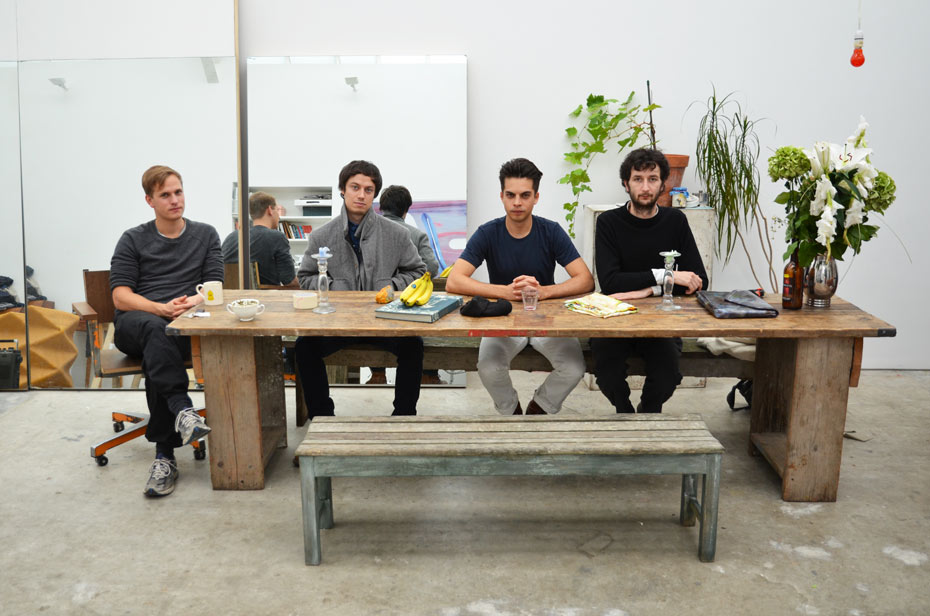William Kherbek talks to lynchpins of the South London art scene, Lucky PDF whose digital art is pushing the boundaries of visual arts

William Kherbek: Could you talk about the background of Lucky PDF, both in terms of “institutional biography” and in terms of the ideas which shaped your approach to art?
Lucky PDF: The four of us were all studying in London at the the same time, though at different colleges. When we met we were all working with technology and pop-culture, we all had an interest in television.
We started working together as a way of expanding our ability to work on larger scale projects and to put ourselves on an equal footing with larger institutions. Self-institutionalisation gave us the freedom to work alongside the established art world structures without having to work under them.
William: Given that much of your work involves Internet discourses, how do you regard the relationship between ontology and teleology in relation to web based art? Obviously, every form of art has a component that integrates the logic of its media, but on a deeper level does the ethos and construction of the Internet feed more “ontological” or more “teleological” readings of art in your opinion?
Lucky PDF: Work online automatically exists is a much larger context of content creation than work in a gallery, and it’s important that what we do can be judged against and interact with the rest of what is out there. Being early adopters and innovative users of popular technology means we can shape how it is seen and used. The Internet is a technology whose purpose is decided by its use. Art is a technology too. The Internet and ‘art’ have prescriptive rules that determine value, and framing devices that alter the perception of meaning to the viewer. What we do is based in the real world, the Internet is a tool.
William: Could you discuss your ideas related to the evolving aesthetic consciousness social networking sites create? And how people who don’t consider themselves “artists” handle the cognitive process of “representing” their lives virtually?
Lucky PDF: Social media doesn’t so much encourage production as participation, and its value is measured in feedback. People post to receive instant feedback gratification. Exactly how they do that, commenting, making friends or retumbling images, varies across platforms. While some artists and non-artists are interested in influencing these flows of feedback, the feedback mechanisms themselves can be
aestheticised, either by working with or against them.
William: Are there new ideas or projects which are particularly of interest to you at the moment?
Lucky PDF: We’re working with Simon Denny and Yngve Holen’s Berlin project space grouphab.it in November and with Elise Lammer for Les Urbaines festival in Lausanne, Switzerland, in December. The LuckyPDF S/S 13 clothing range is available now, directly, via twitter. We hope to make it to New York in the spring.




